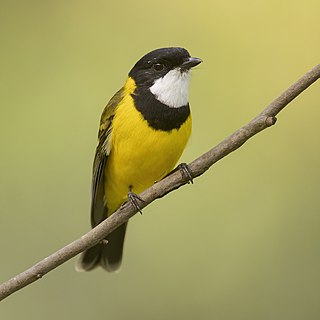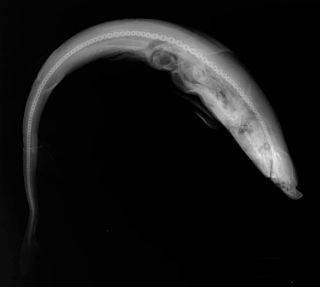
The deltoid muscle is the muscle forming the rounded contour of the human shoulder. It is also known as the 'common shoulder muscle', particularly in other animals such as the domestic cat. Anatomically, the deltoid muscle is made up of three distinct sets of muscle fibers, namely the
- anterior or clavicular part
- posterior or scapular part
- intermediate or acromial part

The bench press or chest press is a weight training exercise where a person presses a weight upwards while lying horizontally on a weight training bench. The bench press is a compound movement, with the primary muscles involved being the pectoralis major, the anterior deltoids, and the triceps brachii. Other muscles located in the back, legs and core are involved for stabilization. A barbell is generally used to hold the weight, but a pair of dumbbells can also be used.

The pectoralis major is a thick, fan-shaped or triangular convergent muscle of the human chest. It makes up the bulk of the chest muscles and lies under the breast. Beneath the pectoralis major is the pectoralis minor muscle.

Pectoralis minor muscle is a thin, triangular muscle, situated at the upper part of the chest, beneath the pectoralis major in the human body. It arises from ribs III-V; it inserts onto the coracoid process of the scapula. It is innervated by the medial pectoral nerve. Its function is to stabilise the scapula by holding it fast in position against the chest wall.

Pectoral muscles are the muscles that connect the front of the human chest with the bones of the upper arm and shoulder. This region contains four muscles that provide movements to the upper limbs or ribs.

The Australian golden whistler or golden whistler, is a species of bird found in forest, woodland, mallee, mangrove and scrub in Australia. Most populations are resident, but some in south-eastern Australia migrate north during the winter. Its taxonomy is highly complex and remains a matter of dispute, with some authorities including as many as 59 subspecies of the golden whistler, while others treat several of these as separate species. This bird is also known as White-Throated Thickhead in older books.

The medial pectoral nerve is (typically) a branch of the medial cord of the brachial plexus and is derived from spinal nerve roots C8-T1. It provides motor innervation to the pectoralis minor muscle, and the lower half of the pectoralis major muscle. It runs along the inferior border of the pectoralis minor muscle.

The clavipectoral fascia is a strong fascia situated under cover of the clavicular portion of the pectoralis major.

The superior thoracic artery is a small artery located near the armpit. It usually originates from the axillary artery, but can instead originate from the thoracoacromial artery. It supplies the pectoralis minor and major muscles, and the chest wall.

The pectoral fascia is a thin lamina, covering the surface of the pectoralis major, and sending numerous prolongations between its fasciculi: it is attached, in the middle line, to the front of the sternum; above, to the clavicle; laterally and below it is continuous with the fascia of the shoulder, axilla, and thorax.

The Atlantic weasel shark is a weasel shark of the family Hemigaleidae, found in the eastern Atlantic Ocean. Also known as the little tiger shark, it is the only species of the genus Paragaleus to have been recorded off the western coast of Africa. It is one of four species of small sharks within the carcharhinoid genus Paragaleus, including Paragaleus leucolomatus, Paragaleus tengi, and Paragaleus randalli. It also one of eight species within the weasel shark family, Hemigaleidae. It is currently considered by the International Union for Conservation of Nature (IUCN) as Endangered.

The stubble quail is a native Australian species which is the most common quail species in Australia. The species is not under any threat of extinction. Stubble quail are widespread and found throughout all states and territories of Australia excluding Tasmania. Other common names include grey quail and pectoral quail.

The snakeskin gourami is a species of gourami native to Southeast Asia. Prior to the merging of Belontidae to the family Osphronemidae, the snakeskin gourami was regarded as the largest member of its family. It is still the largest species in its genus and subfamily.

The white-ankled mouse is a species of rodent in the family Cricetidae. It is found in Mexico and in New Mexico, Oklahoma and Texas in the United States.

The fiery-necked nightjar is a species of nightjar in the family Caprimulgidae, which is found mostly in Africa south of the equator, though it has been spotted in a few countries north of the equator. It is most often found in woodland savannas or other deciduous woodlands. It is usually distinguished by its tawny coloured collar which gives the species its common name. It has a distinctive call that many have rendered as 'good-lord-deliver-us'. The fiery-necked nightjar is an insectivorous species that mostly eats butterflies, moths and other insects. The fiery-necked nightjar breeds after the dry season and typically produce two clutches with two eggs per clutch.

The bearded tachuri is a species of bird in the family Tyrannidae.
Kim Clijsters defeated Justine Henin-Hardenne in the final, 7–5, 6–1 to win the women's singles tennis title at the 2005 Canadian Open.
Nephelomys pectoralis is a species of rodent in the genus Nephelomys of family Cricetidae. Its type locality is 40 miles (64 km) west of the city of Popayán, Cauca Department, Colombia, at an altitude of 10,340 feet (3,150 m). American zoologist Joel Asaph Allen first described it in 1912 on the basis of 112 specimens from several locations in the Cordillera Occidental. He classified it as a species of Oryzomys, Oryzomys pectoralis, but later subsumed into the species Oryzomys albigularis. When that species was transferred to the new genus Nephelomys in 2006, N. pectoralis was recognized as a separate species.

Oncideres is a genus of longhorn beetles of the subfamily Lamiinae, containing more than 120 species in the nearctic and neotropics.
Pectoralis minor syndrome (PMS) is a condition related to thoracic outlet syndrome (TOS) that results from the pectoralis minor muscle being too tight. PMS results from the brachial plexus being compressed under the pectoralis minor while TOS involves compression of the bundle above the clavicle. In most patients, the nerves are constricted resulting in neurogenic PMS, but venous compression can also occur.













